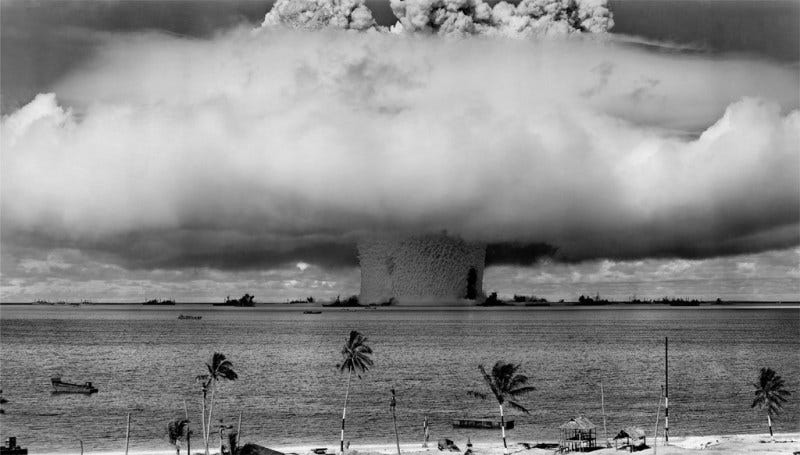The Impact of Peaceful Nuclear Explosions on Engineering and Energy
Written on
Chapter 1: Introduction to Peaceful Nuclear Explosions
During the Cold War, both the United States and the Soviet Union engaged in a series of non-military nuclear tests known as peaceful nuclear explosions (PNEs). These programs, which lasted from the early 1960s until the late 1980s, aimed to explore the potential of thermonuclear detonations for various commercial uses including construction, oil extraction, and even space exploration.
These agreements were foundational in establishing protocols around nuclear testing, reflecting the geopolitical dynamics of the time.
Section 1.1: The Treaty and Its Terms
In 1976, both superpowers signed the Peaceful Nuclear Explosions Treaty after extensive discussions. The agreement placed limits on the size of explosions, capping individual detonations at 150 kilotons and cumulative tests at 1,500 kilotons. Additionally, the treaty required mutual oversight, allowing for observers from each nation during tests to ensure compliance, a challenging task given the Cold War tensions.
Subsection 1.1.1:

Section 1.2: The Soviet Union's PNE Program
The Soviet Union executed 124 PNEs between 1965 and 1989 under a program termed Peaceful Nuclear Explosions for the National Economy. The inaugural test in 1965, which occurred at the Chagan nuclear site in Kazakhstan, was the largest of its kind, yielding a blast of 140 kilotons. This explosion was intended to create an artificial reservoir by detonating a nuclear device deep underground, resulting in a crater measuring 100 meters in depth and 400 meters in diameter. Interestingly, this site has since filled with water, leading to its nickname, the "Atomic Lake."
The first video titled "The Soviet Union's Peaceful Nuclear Explosions" explores the context and implications of these tests.
Lake Chagan, now known as the "Atomic Lake," emerged from the USSR's nuclear testing efforts, showcasing the unexpected consequences of such detonations.
Section 1.3: Ambitious Projects and Outcomes
The Soviets also considered utilizing PNEs to construct a canal that would channel water from the Northern Arctic to the Volga River. Although the project began in 1969, it was ultimately abandoned due to unsuitable conditions in certain areas.
On a more successful note, in 1966, a 30-kiloton explosion was used to extinguish a gas well fire that had persisted for three years, marking a notable achievement within the PNE framework.
Chapter 2: The U.S. Perspective on PNEs
In the United States, the PNE initiative was known as the Plowshare Program, established in 1957. Named after a biblical verse advocating for peace, the program aimed to explore the feasibility of using nuclear explosions for large-scale excavation and other civil engineering projects.
The second video titled "How to Make Roads with Nukes - Nuclear Explosions For Peace" discusses the potential applications of PNEs in infrastructure development.
While the U.S. program was shorter-lived, it conducted 27 tests, including Project Gnome in 1961, which sought to create underground cavities. The Sedan blast in 1962 was another significant test, designed to assess the potential of artificial reservoirs. However, this test also resulted in considerable radioactive fallout, raising concerns about safety and environmental impact.
Despite the innovative aspirations, many proposals remained economically unfeasible or faced local opposition, leading to their eventual cancellation.
In conclusion, both nations explored the potential of PNEs for commercial and engineering purposes, revealing both the possibilities and risks associated with nuclear technology. As we reflect on these historical events, it's crucial to consider their implications for contemporary nuclear policies and the ongoing dialogue around nuclear energy and safety.
